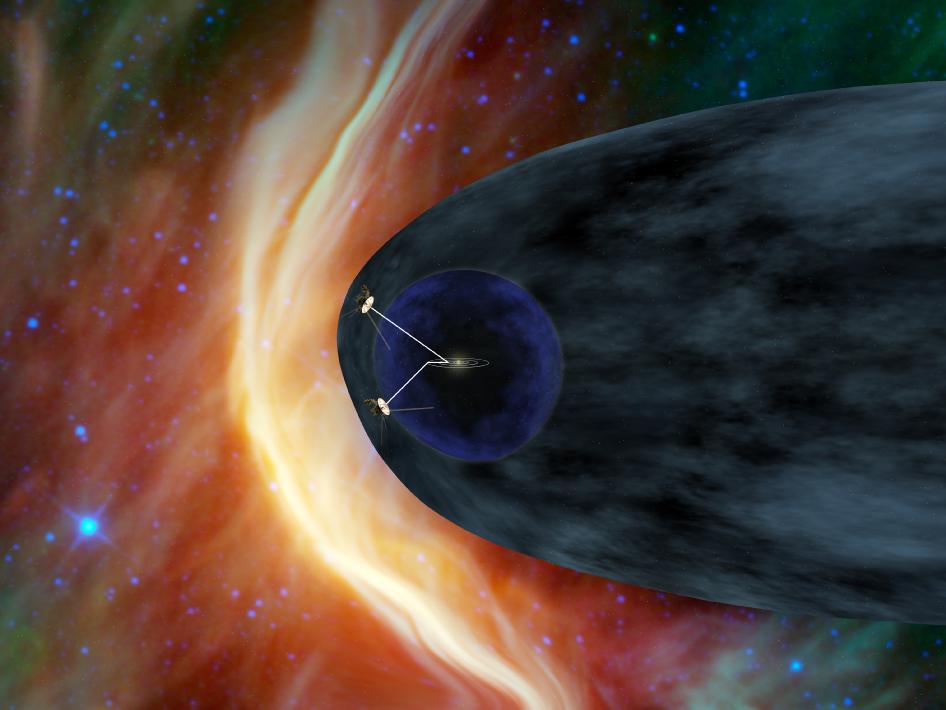Science News
Bubbles of the Solar System
June 14, 2011
by Bing Quock

More than 30 years since their launch in 1977, NASA’s trailblazing Voyager spacecraft are still busy, studying the space environment between stars.
Both are now in the interstellar phase of their mission, having long ago accomplished their main mission of exploring the outermost planets of the solar system. At 9 billion miles from Earth, they are at the boundary between the Sun’s magnetic influence and the “interstellar wind,” a stream of charged particles emanating from nearby stars.
In the June 9 edition of the Astrophysical Journal, scientists report that data from the venerable vehicles suggest that this boundary, or heliosheath, rather than being a smooth interface, is chaotic and turbulent, seething with an unexpected “froth” of gigantic magnetic bubbles. These bubbles are thought to form when the Sun’s magnetic field lines are broken up into self-contained structures measuring about 100 million miles across, about the distance from the Sun to the Earth.
The precise implications of this finding remain unknown, but some scientists suggest that these bubbles may affect the way cosmic rays enter the solar system. Generated by distant black holes and exploding stars, these high-energy particles are thought to either penetrate the porous structure of the froth with ease or become trapped within the magnetic fields of the bubbles. Exactly which of these mechanisms is in play isn’t certain at this point, and scientists are hoping that supporting data can be obtained from other Voyager instruments.
Solving the mystery of the magnetic “foam” surrounding the solar system will take very careful analysis and will likely provide even more surprises.
Bing Quock is the assistant director of the Morrison Planetarium.
Image credit: NASA/JPL-Caltech